Bloody snow. The draw at Eylau is a missed chance for Bennigsen... or Napoleon
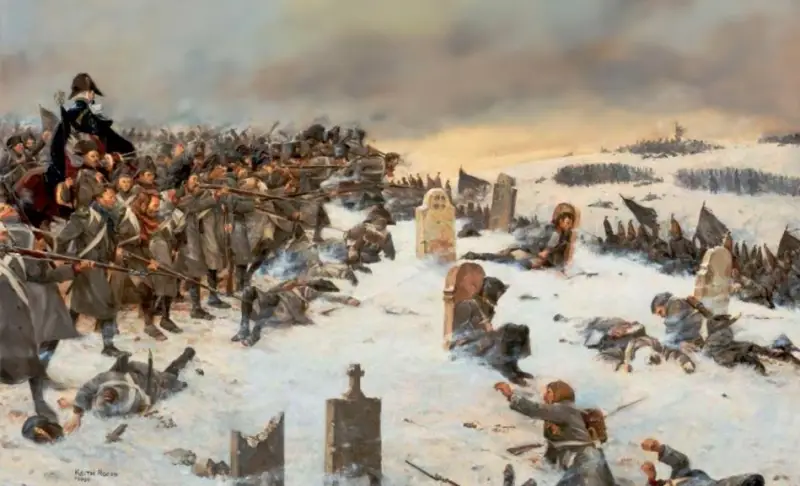
This time, historians and local historians, gathering for the conference and related events, will be able to see the good results of the restoration of the legendary Eylau Castle, or rather its fort. And they will have many more reasons to remember and study history one of the bloodiest and most controversial battles of that glorious era. Oddly enough, it also received the name “Napoleonic” in Russia.
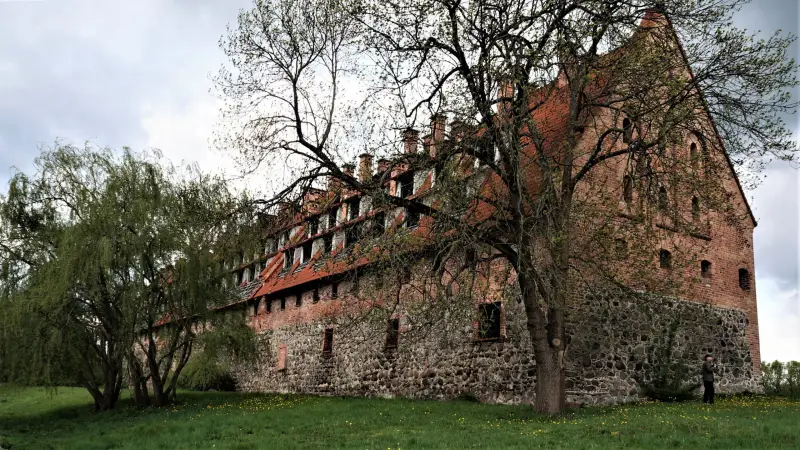
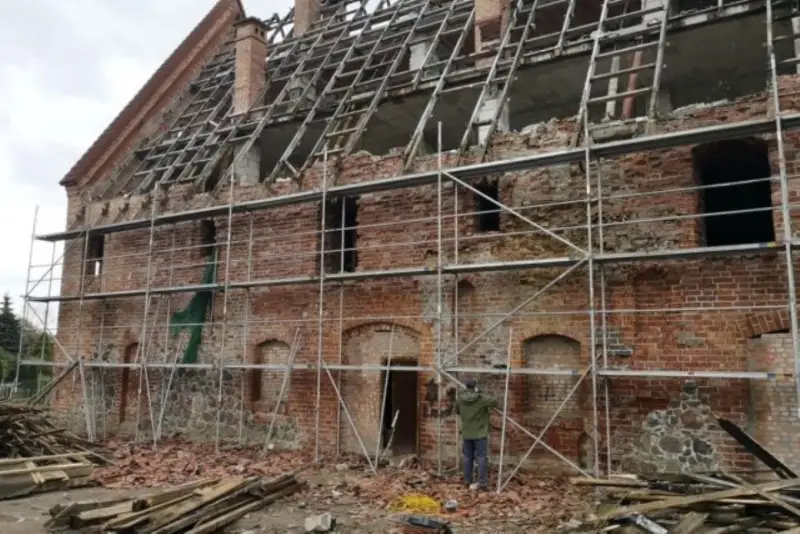
Reconstruction of the foreburg of Eylau Castle in Bagrationovsk began only in May 2023.
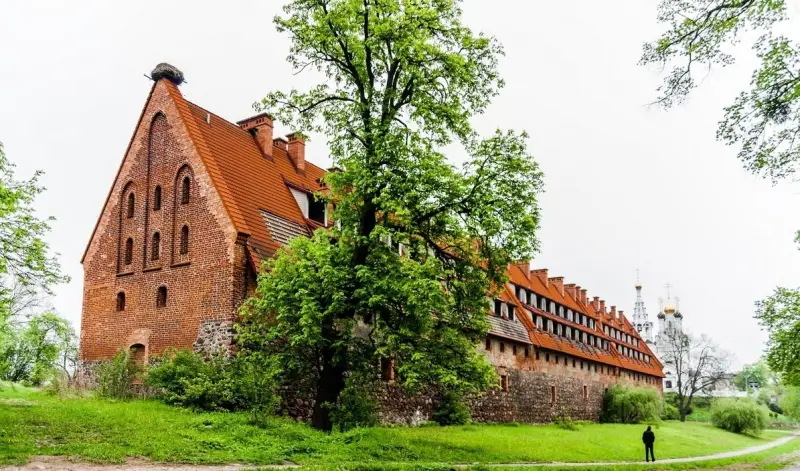
According to historian David Chandler, "none of the great Napoleonic battles is surrounded by greater ambiguities and oddities in characterization than the Battle of Eylau." But, unlike a number of other Napoleonic failures, no one dares to call this drama a victory for the French, despite the fact that the Russians decided to leave the battlefield to them.
However, after some of his victories, Napoleon also did not pursue the defeated enemy and could even allow himself to retreat. If this, of course, was beneficial to him. Bennigsen, along with other commanders, most likely did not realize all the benefits of his position.
However, after the bloody battle, all of them, it seems, could not believe that their troops were really capable of finishing off Napoleon’s army. The French commander did not hide his satisfaction that the Russian army had finally turned to face him, but the disposition for an immediate strike was not the most favorable.
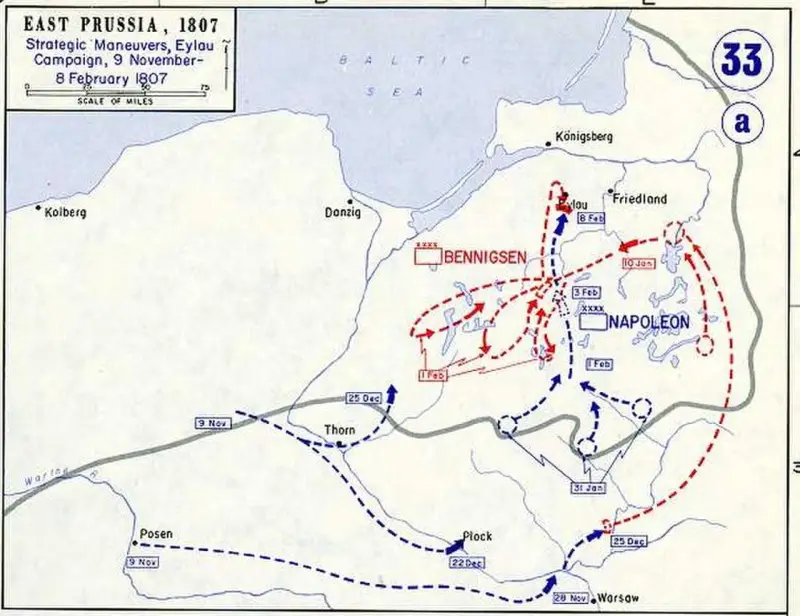
After fierce clashes at Yankov and Gough, the French positions stretched, and Davout and Ney had to pull up the corps on the day of the decisive battle. The first to approach the outskirts of Eylau were the troops of Soult and Murat, then they were joined by Augereau's corps and the guard, but all together they did not have a decisive superiority in strength over the Russians.
Against Bennigsen’s 70-strong army, no more than 45 people could be immediately sent to attack, another 14 people of Marshal Ney, a little further north, unsuccessfully hunted for the Prussians of Lestocq (500 infantry and cavalry), and Davout’s 9-strong corps with an accelerated march from Bortenstein only was also targeting the Russian left flank. But the main thing is that the French were much inferior to the Russians in artillery, having only 15 guns against 200.
The Emperor was also left without Bernadotte's corps, which had missed the Prussians and was no longer in time to reach the site of the general battle. Both armies were preparing for a decisive battle. At the same time, not only the Russian troops were very tired from marches and rearguard battles. The French fared no better.
This is how the French described the state of the opposing armies before the decisive battle on January 27 (February 8), 1807:
The fire and smoke of the bivouacs made their faces yellow, emaciated, unrecognizable, they have red eyes, their uniforms are dirty and smoky. "
Russian historian A.I. Mikhailovsky-Danilevsky:
When, at the flickering of dawn, it was necessary to rise from the night's sleep, it was difficult to wake up those who had been put to sleep. When they were asleep, they looked like they were stupefied, and the weaker ones, moving a short distance away from the camp site, lay down on the snow and fell asleep again. Nature came into its own, prevailed over the forces of the brave, but did not exhaust the courage of the French and Russians, ready to fight to the last drop of blood.”
However, the battle itself was largely unexpected for the French, and besides, the Russians could well have withdrawn from the battle on the second day of the battle. Napoleon ordered an attack on the small town of Eylau on the move, in order to prevent the enemy from capturing it earlier, and at the same time to save at least part of his soldiers from the cold.
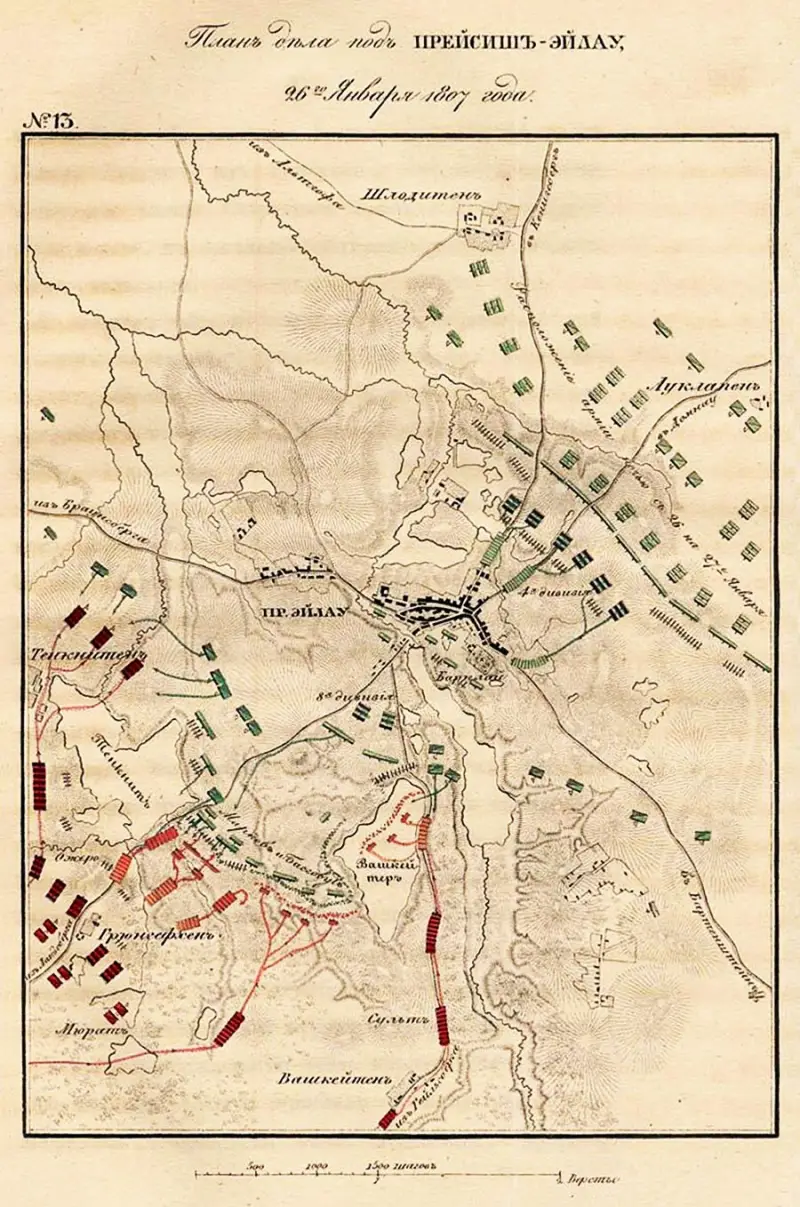
It is not easy to judge to what extent they managed to catch Bennigsen and prevent him from leaving during the night. The Russian army itself was eager to fight. If Napoleon had simply waited for the corps of Ney and Davout to approach, Eylau would have remained with the Russians, and everything could have ended up turning into another rearguard battle, in which the attacker always suffers heavy losses.
The evening battle for the city itself is compared to the Battle of Shevardino, but here, after the prelude, the parties did not even need a pause, unlike Borodino. The fighting, mostly hand-to-hand, resumed in the snow before dawn. The clash itself is notable not only for its fierceness, but also for how strangely and unexpectedly the Russians lost the city to the enemy.
It is believed that General Somov, appointed commandant of Eylau, simply dismissed the soldiers, who, having thoroughly warmed up, could no longer resist the concerted onslaught of the French. Many of them managed to settle in the warmth of the town, while the Russians spent the night right in the cold, which, according to a number of sources, that night dropped below minus 20 degrees.
The French, however, did not receive any real benefits from capturing the advanced Russian line. To make matters worse, in the morning their attack on the ridge occupied by Russian lines and artillery had to be carried out from a very short distance, just after leaving the narrow streets of Eylau. Moreover, under direct fire from grapeshot.
Even after noon on February 7, Napoleon admitted to Marshal Augereau that he did not like night battles and did not want to push his center forward much until Davout and Ney approached. Russian historians blame Bennigsen for the loss of Eylau; the French consider Napoleon’s attack on the city “a very big mistake.” It is possible that the attack was completely spontaneous, like many things in war, especially since the emperor’s personal luggage was at risk.
In response to the French attack, Russian generals, believing that the French wanted to capture Eylau, sent reinforcements, and a bloody battle ensued in the streets. The battle dragged on until darkness, and it was especially hot near the city cemetery, which the French captured only closer to midnight. The sides lost at least three thousand people each until the Russians retreated under the cover of the columns of Barclay de Tolly's division to a chain of heights northeast of Eylau.
The bivouacs of Legrand's division from Soult's corps were hastily broken right in front of the city and slightly to the right, Saint-Hilaire's division stood to the right of Eylau in front of Rothenin, and Augereau's corps prepared to attack to its left, almost next to the city cemetery. The divisions of Marshal Davout's corps completed their approach around Eylau, aiming at the enemy's left flank; Marshal Ney had to bypass the right. The French, like the Russians, had a poor supply of food and fodder, and both had no choice but to fight.
With dawn the snowstorm became even stronger, the French could hardly see the Russian position. Only in the bursts of almost continuous snow charges did it become noticeable that they occupied a kilometer-long ridge stretching east and northeast of Eylau - directly opposite the French positions on the low Western Plateau.
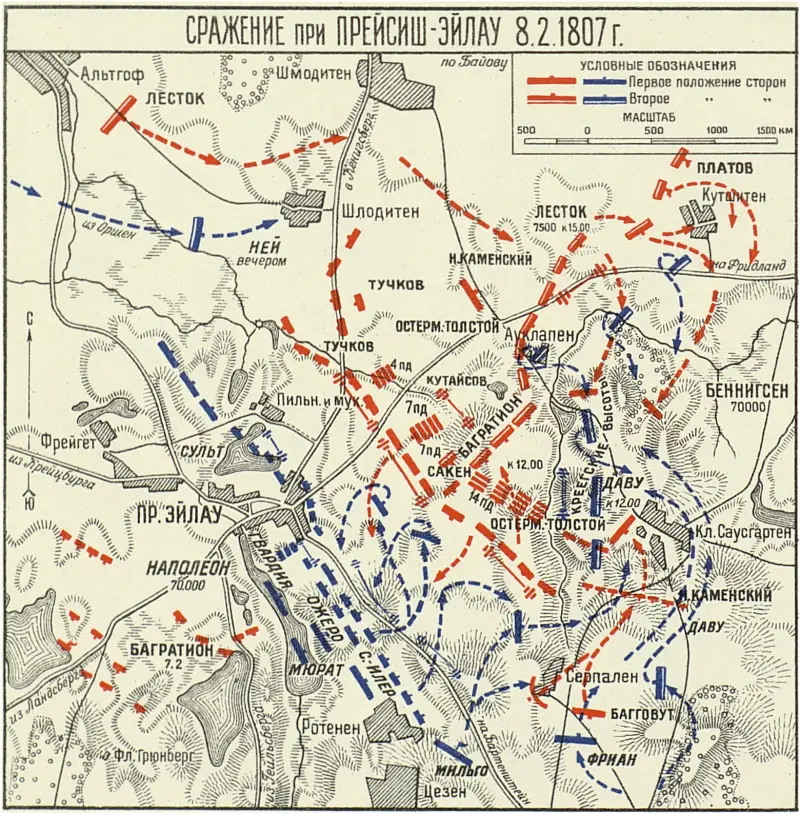
Now the 75-strong French army with 200 guns was opposed by at least 70 Russians, who were about to be approached by another 9 of Lestock. There were considerable doubts about whether the 14 soldiers from Ney's French corps could keep up with them. One thing is certain: by the morning of February 500, Napoleon still did not have a crushing superiority in forces.
As the direction of the main attack, the emperor, as later at Borodino, chose the left flank of the Russians in order to cut off their escape route to the border. The encirclement of Davout's corps was to be completed by Ney, who was pursuing Lestocq. But the divisions of Soult’s corps, which were located to the left of the road to Königsberg, were the first to attack enemy positions.
Following Soult, as soon as Davout approached, the center and right wing were to attack - Saint-Hilaire's division, Augereau's corps and the entire cavalry, immediately behind which the guards took their positions.
Early in the morning, when the sun was just shining literally from under the hanging clouds, the Russian batteries, noticing the movements of the enemy, opened an artillery cannonade. The answer was a not too strong French battery fire and an attack by the left wing. The most important thing for Napoleon at this moment was to distract the Russians from the advance of Davout’s corps. The Russians repulsed Soult's attacks and even successfully counterattacked with several dragoon regiments.
As soon as the columns of Davout's corps came into view of the Russians, Napoleon launched the entire Augereau corps into the attack. Together with Saint-Hilaire's division, he moved towards Serpallen, but in the snow charges the attacking columns dispersed greatly. Saint-Hilaire had to storm the positions of Osterman-Tolstoy almost single-handedly, without any hope of success.
Augereau's corps moved to the left and eventually advanced against the strong Russian center, where the divisions of Kamensky, Saken and Dokhturov's reserves were stationed. Augereau was immediately met with grapeshot fire from 70 Russian guns under the command of General K. F. Levenstern. The French were never able to determine their location - not only because of the snowfall, but also because they were covered by infantry lines.
Osterman-Tolstoy's first line, taking advantage of the confusion in the enemy's ranks, struck with bayonets; it was soon supported by columns from the second line. Almost 20 thousand Russians and French came together in a heated bayonet battle, but the threat from Saken’s units loomed over Augereau’s left flank.
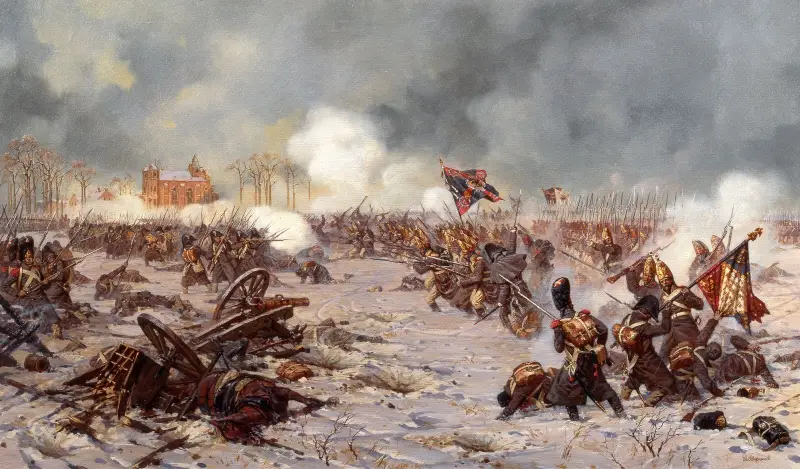
The corps of the marshal, who was ill before the battle, was simply crushed, one of the regiments - the 14th linear, lined up in a square on a high-rise building covered with snow, was surrounded, and only a few hundred people were able to break through to their own. With heavy losses, Augereau's frustrated troops retreated under the pressure of Russian grenadiers, which was seen even by Napoleon himself, whose headquarters was located in the Preussisch-Eylau cemetery.
Russian cavalrymen almost broke through there, and grenades and cannonballs kept falling next to the emperor. There were losses even in the retinue of the emperor, who just then said his famous: “What courage! What courage!
It was not the danger that threatened him, but the defeat of Augereau’s corps that forced the emperor to launch into a counterattack 75 squadrons of Marshal Murat, supported by the guards cavalry of Marshal J.-B. Bessier. Perhaps it was then that, having attacked the French with all his might, Bennigsen could have counted on victory, although Napoleon, in addition to the cavalry, still had the entire guard in the rear.
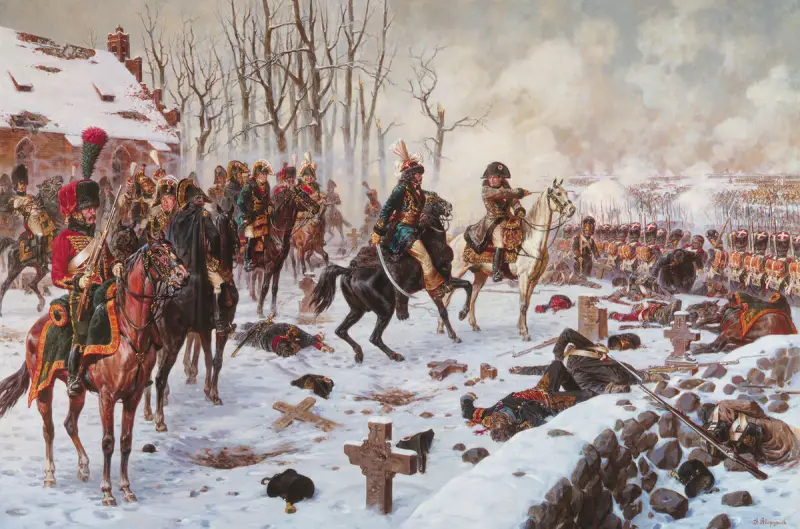
Murat's squadrons, forming deep columns, bypassed Saint-Hilaire's division, which was barely holding its position, and fell on the Russian lines, literally tearing them in two. Murat's cavalry was met by Russian cavalry, and a battle began, so fierce that the emperor ordered that this massacre be separately noted in the 58th “Bulletin of the Grand Army.”
There was no winner in the cavalry battle, which ended with heavy losses for both sides. Murat, who managed to save the situation of the French army, withdrew his frustrated forces to their original positions, and the Russians had no options left for pursuit. The infantry also froze, only the duel of the artillerymen continued.
Only at noon did the vanguards of Davout’s corps finally enter the battle, attacking the advanced Russian detachment of K. F. Baggovut at Serpallen. However, it was not possible to achieve decisive success on the move, and Napoleon was forced to attack the Russian center again and again.
The Saint-Hilaire division, supported by two dragoon divisions, moved to strengthen the right flank in support of Davout's corps. Pressure on the Russian left flank, attacked from virtually three sides, forced Baggovut's detachment to retreat in the direction of Klein-Sausgarten.
The introduction of reserve formations into the battle did not help either; Bennigsen’s entire left flank slowly retreated, alternately leaving the French strongholds of their defense: Klein-Sausgarten, Auklappen and Kuchitten.
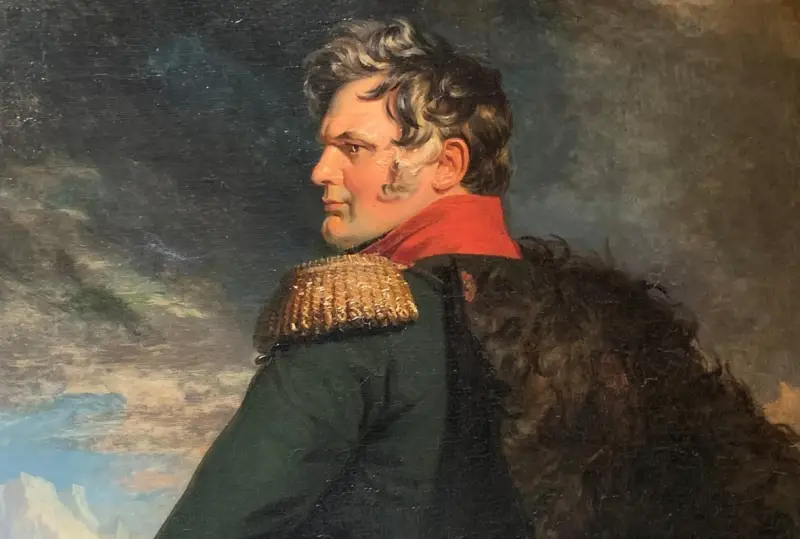
In the memoirs of A.P. Ermolov, then an artillery lieutenant colonel, these minutes are described as follows:
On the left flank by this time, Kamensky’s division, and almost all of Otserman-Tolstoy’s forces, and Saken were already fighting against Davout and Saint-Hilaire. Against the battered center of the French and Soult's corps, behind which dense columns of guards and cavalry were visible, only the forces of General Tuchkov remained.
At such a difficult moment, even the last reserves of the army could hardly help, and its commander Bennigsen urgently rode out to meet the approaching Prussian corps of Lestocq. At least, this is what Bennigsen himself claims in his notes on the war of 1807. Contemporaries were ready to accuse him of almost fleeing the battlefield, but there is no direct evidence of this. However, Bennigsen’s subordinates were the first to make a difference in the battle.
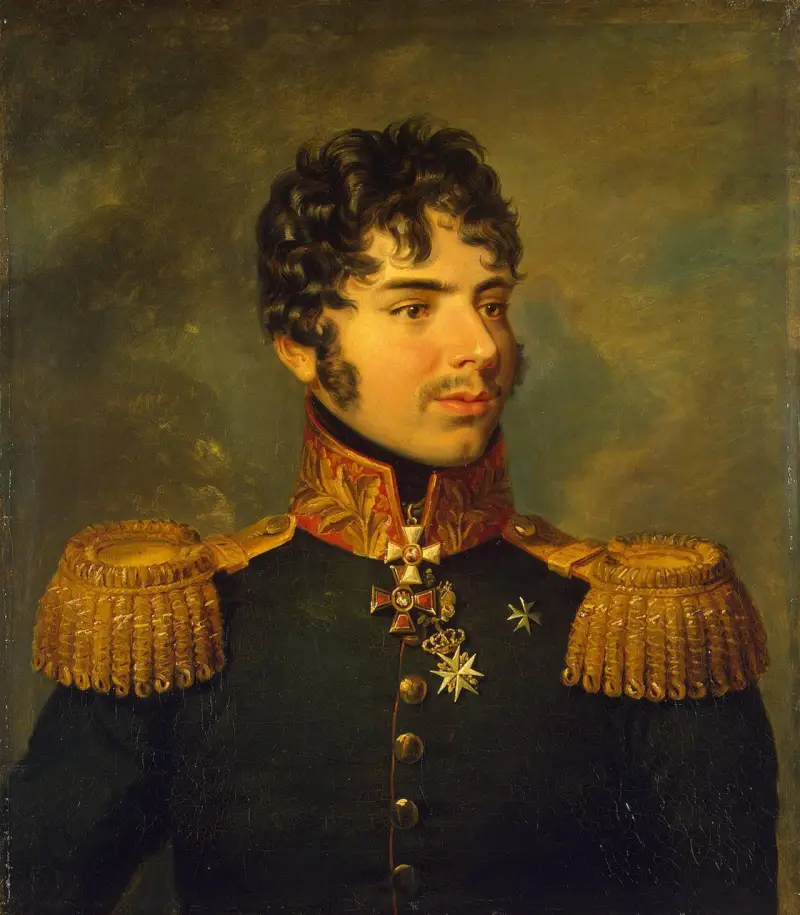
Thus, the chief of artillery of the right wing of the Russians, General A.I. Kutaisov, sent three horse artillery companies from the right wing to Auklappen under the command of Lieutenant Colonel Ermolov, who subsequently did not hesitate to attribute all the merits to himself. But this is not what is important - upon arriving at the place, Ermolov found the Russian lines fairly upset and suffering heavy losses. Osterman, Kamensky, Saken's division and especially Baggovut's detachment, together with the regiments that came to his aid, held out with all their might.
Having rolled into position literally in front of the French, who were preparing for a decisive attack, Ermolov’s 36 guns opened fire, which the enemy could only respond to with difficulty. Most of the French guns were stuck in snow mixed with mud. This episode was invariably ignored by both French historians and such an authoritative researcher as Chandler.
However, it’s also not worth looking for details in their description of Davout’s offensive, but many say something like this about the Russian retreat: “The Russians were not crushed by the divisions of Friant and Moran only because they had somewhere to retreat.” Be that as it may, after the Russian horse artillery entered the battle, Davout's infantry was driven back.
And the guns that the French managed to pull up were forced into silence by the Russian bombardiers with their well-aimed fire. Even before the Prussians approached, the Russians launched a counterattack and again captured Auklappen. It was already getting dark when, at about five o’clock in the afternoon, the advanced units of Lestocq’s corps came to the aid of Osterman-Tolstoy’s troops.
Finding themselves on the field of a slightly subsided battle, the Prussians attacked on the move. The French, who clearly expected to finish off the enemy the next morning, were repulsed at all points of the Russian left flank. With great difficulty, the infantry of Davout's corps managed to hold out only at Klein-Sausgarten, from where the Russians and Prussians could not knock them out, most likely because it was already dark.
Until late in the evening, the sides exchanged rare artillery shots, counting losses. On both sides there were more than 20 thousand killed and wounded. There were almost no prisoners among the French, nor among the Russians and Prussians. At the same time, in the darkness, divisions from Ney’s corps also managed to enter the battle, attacking Tuchkov’s right flank, but without much success.
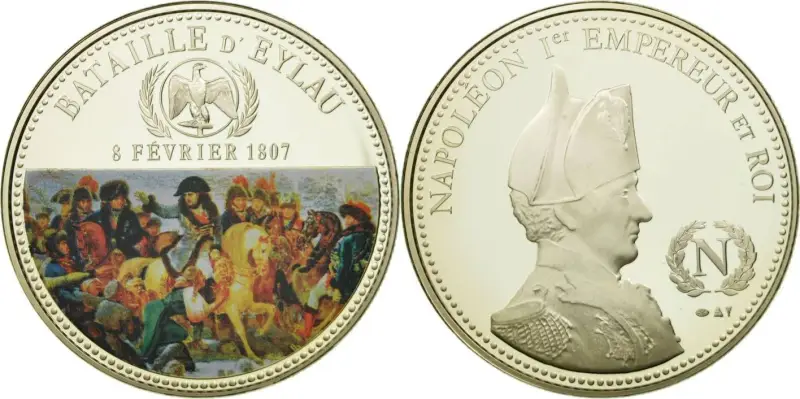
In a short battle near Schloditten, only the Russian cavalry and Cossacks chose to escape from Ney’s attack. One eyewitness to the battle wrote:
Bennigsen did not win the battle and, perhaps, even missed the chance even then to force Napoleon to conclude a peace much more honorable than Tilsit. However, it is enough that at Preussisch-Eylau Napoleon for the first time did not emerge as an unconditional winner precisely against the Russian army.
The moral victory of the Russians was undeniable; the disgruntled French emperor waited another four months for an opportunity to settle accounts with Bennigsen, which he succeeded only at Friedland.
Information